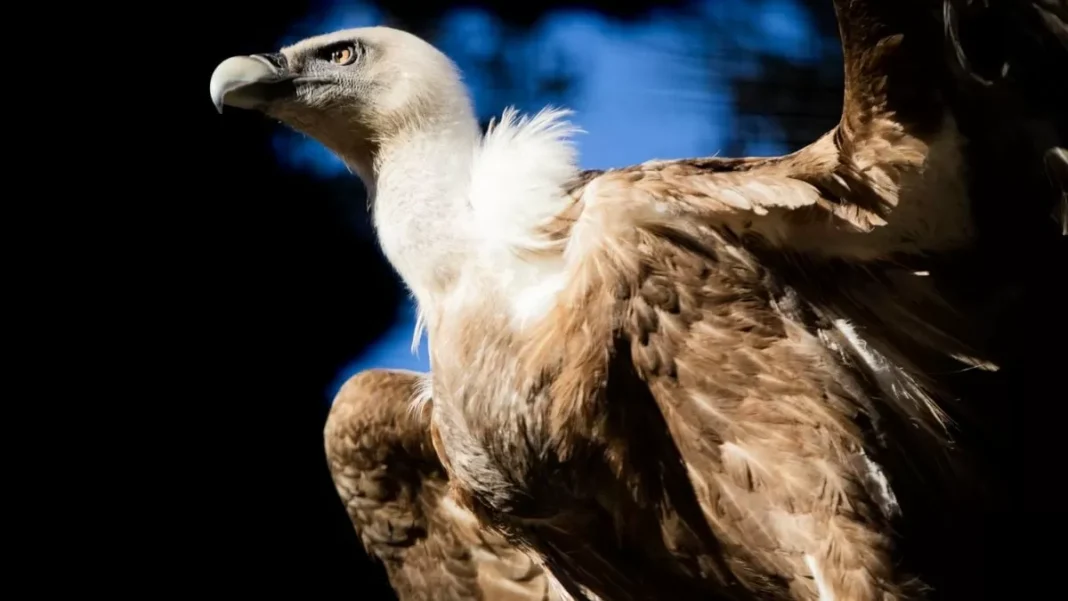Fossilized feathers of a 30,000-year-old vulture have been discovered in volcanic ash near Rome, providing a rare and unique glimpse into the preservation process of ancient birds. Unlike most fossilized feathers, these have retained their three-dimensional structure, thanks to the presence of zeolite minerals formed within the ash. This remarkable finding has excited scientists, who believe that the vulture was buried in a low-temperature pyroclastic deposit, allowing for such exceptional preservation.
The discovery of these fossilized feathers was made by a team of researchers from the University of Rome, who were conducting a routine excavation in the Alban Hills area, just south of the Italian capital. The team was surprised to find a well-preserved vulture carcass buried in volcanic ash, along with several other fossils. However, what was even more astonishing was the condition of the feathers on the vulture’s wings.
Typically, when an animal dies and gets buried, the soft tissues decompose quickly, leaving behind bones and occasionally, teeth. However, in this case, the feathers were remarkably preserved, retaining their original shape and form. This is a rare occurrence in the fossil record, and scientists believe it is due to the presence of zeolite minerals in the volcanic ash.
Zeolites are a group of minerals known for their ability to trap and preserve organic matter. When the vulture was buried in the volcanic ash, it was exposed to high temperatures, causing its soft tissues to decompose rapidly. However, the ash also contained zeolite minerals, which acted as a protective layer, trapping the feathers and preventing them from disintegrating.
According to Dr. Lucia Mancini, the lead researcher on the team, this is the first time that such a well-preserved set of feathers has been found in a volcanic deposit. She explains, “This discovery is truly exceptional. It is extremely rare to find such well-preserved feathers in a volcanic environment. The presence of zeolites in the ash has played a crucial role in preserving these delicate structures, giving us a unique opportunity to study them in detail.”
The analysis of the fossilized feathers revealed that they belonged to a vulture species known as Neophron percnopterus, also known as the Egyptian vulture. This species is still found in parts of Europe, Asia, and Africa, and is known for its scavenging habits. The vulture’s wingspan is estimated to have been around 1.4 meters, making it a medium-sized bird.
The team of researchers also used advanced imaging techniques to study the internal structure of the feathers. They found that the zeolites had formed small hollow tubes within the feathers, creating a three-dimensional network. This network acted as a support for the delicate structures, preventing them from collapsing and maintaining their original shape.
The discovery of these fossilized feathers has provided valuable insights into the preservation process of ancient birds. It also sheds light on the environmental conditions that existed during the time the vulture was buried. The low-temperature pyroclastic deposit in which the vulture was found suggests that it was a relatively calm and stable environment, unlike the high-temperature volcanic eruptions that are typically associated with fossil preservation.
The team of researchers believes that this finding could open up new avenues for the study of other fossilized feathers. Dr. Mancini says, “The unique preservation process seen in these fossilized feathers could help us better understand the evolution of bird feathers and how they have adapted to different environments over time. We hope to find more such well-preserved specimens in the future to expand our knowledge about these ancient creatures.”
This discovery is not only significant for the scientific community but also for the general public. It gives us a glimpse into the world of a vulture that lived thousands of years ago, and how its feathers have been preserved through a remarkable natural process. The fossils will be on display at the University of Rome, allowing people to see and appreciate this incredible find.
In conclusion, the discovery of fossilized feathers of a 30,000-year-old vulture in volcanic ash near Rome has provided a unique and rare opportunity for scientists to study and understand the preservation process of ancient birds. The presence of zeolite minerals in the ash has played a crucial role in preserving these delicate structures, giving us a glimpse into the world of a vulture that lived thousands of years ago. This discovery opens up new possibilities for the study of other



